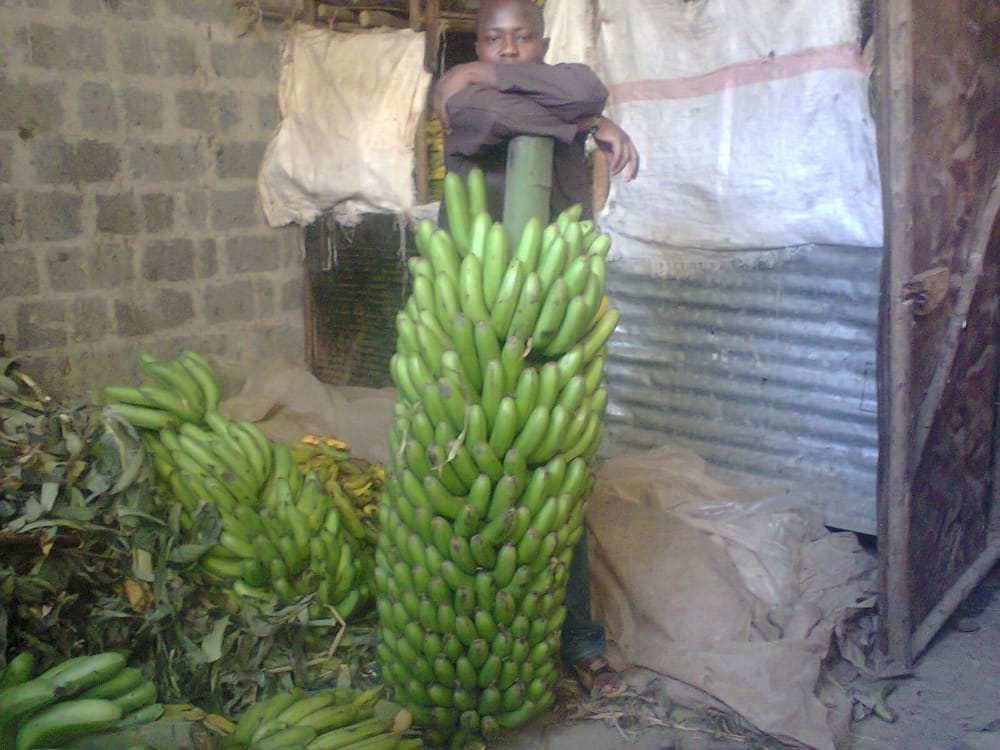
By George Munene
With banana prices at their usual December to February year low; current farm-gate prices range from Sh10 to 11 per kilogram, to the usual over Sh14, some farmers have resorted to feeding their bananas to cattle. Patrick Mbora, a banana farmer and middleman at Mwea, avoids these perennial losses by having his bananas ripen at different seasons to mangoes which have a short seasonal window and are preferred by consumers.
The December to February months are the main mango harvest seasons especially in Eastern and Central Kenya, while also being characterised by rains which increase the weight of bananas
While the growth patterns and density of banana suckers can be controlled by cutting them off with a knife though they often just regrow. “The continuous cutting off of offshoot can be both labor-intensive and costly. With my tissue culture bananas, I avoid this by puncturing a hole on the region the sucker has been cut from and pouring in diesel oil—this I have found completely curbs their regrowth,” says Patrick, who cultivates a 3-acre banana farm at Mwea, Kirinyaga County.
Related News: Farmers’ Friend: controlling yellow sigatoka (yellowing disease) in bananas
Related News: FarmBiz TV : Tissue-culture banana yield double the ancient breeds.
Depending on the intensity of a farmer’s feeding program, suckers should not be more than five on each bed; ideally, a bed should accommodate the mother plant and two suckers.
“While setting up new banana plots I ensure that the plants, which take 9-12 months to develop, mature away from them main mango seasons,” Mbora says.
“In buying bananas, the temperature difference across regions has a major bearing on the maturity rate and weight of bananas; Mwea being a hot region for example has its bananas ripen earlier than those in Embu. The bananas are also lighter–we pay up to two shillings more than we do bananas grown in Embu for example—a region that is colder and experiences more rainfall,” he explains.
Farmers who have invested in irrigation systems are able to cultivate their crops over drier months and earn better returns due to market scarcity.
Related News: Banana farmers find value in neem as botanical pesticide against black weevil
While improved tissue culture cultivars have enhanced the quantities harvestable per acre for farmers, some giant banana varieties are shunned by buyers. “I have had FHIA-17 bananas that weigh up to 102 kilograms; if it is well fed the least it weighs is 80 kilograms. However, their market is poor because their skin splits once they are nearly ripe. Improved bananas also present an added market challenge—because they are heavy, three fingers can weigh one kilogram, the equivalent of up to seven regular-sized bananas; this makes them hard to sell to retail outlets and hawkers who often sell bananas as pieces rather than on a kilogram basis,” Patrick explains.